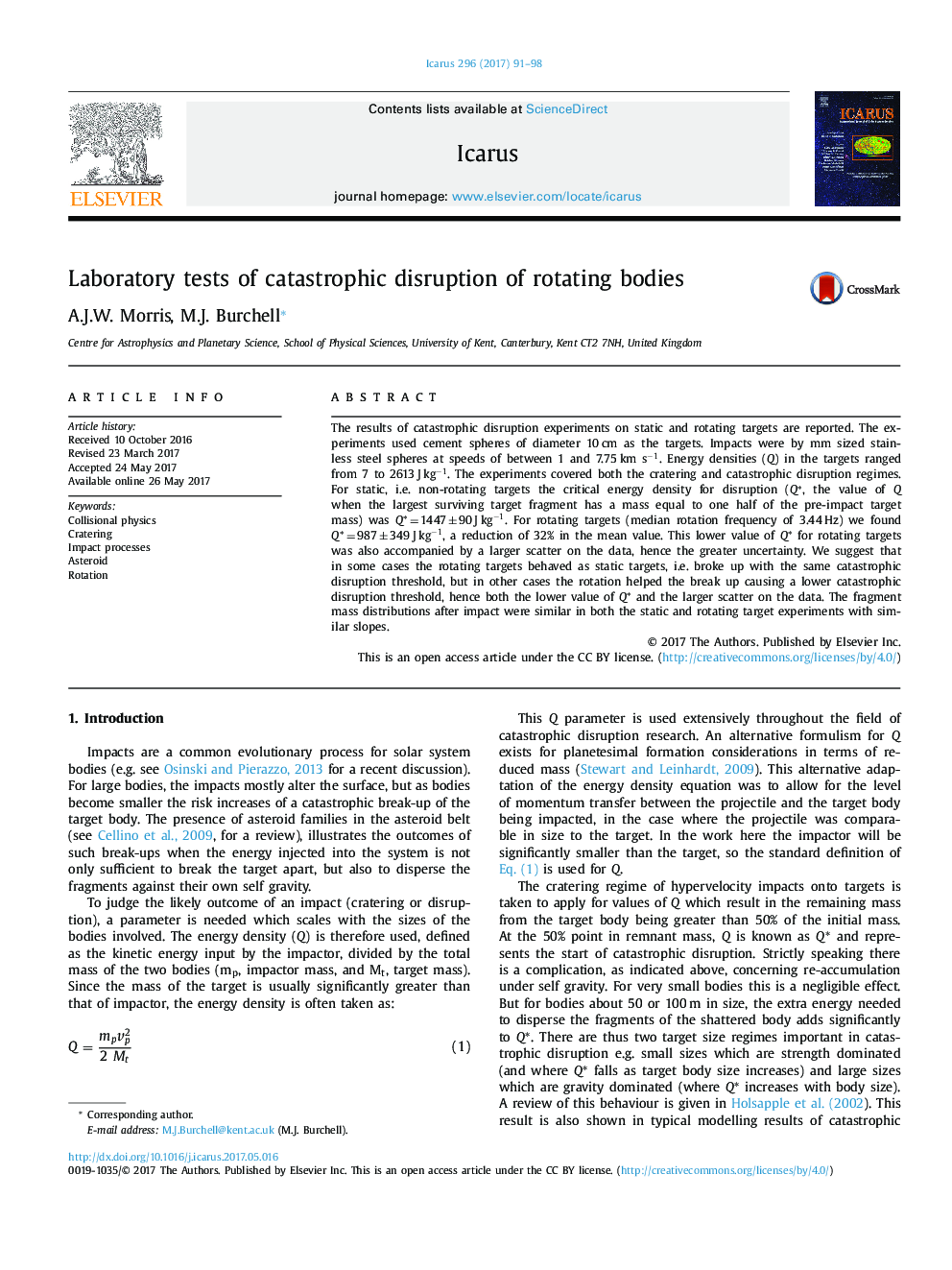| Article ID | Journal | Published Year | Pages | File Type |
|---|---|---|---|---|
| 5486971 | Icarus | 2017 | 8 Pages |
Abstract
The results of catastrophic disruption experiments on static and rotating targets are reported. The experiments used cement spheres of diameter 10 cm as the targets. Impacts were by mm sized stainless steel spheres at speeds of between 1 and 7.75 km sâ1. Energy densities (Q) in the targets ranged from 7 to 2613 J kgâ1. The experiments covered both the cratering and catastrophic disruption regimes. For static, i.e. non-rotating targets the critical energy density for disruption (Q*, the value of Q when the largest surviving target fragment has a mass equal to one half of the pre-impact target mass) was Q*â=â1447â±â90 J kgâ1. For rotating targets (median rotation frequency of 3.44 Hz) we found Q*â=â987â±â349 J kgâ1, a reduction of 32% in the mean value. This lower value of Q* for rotating targets was also accompanied by a larger scatter on the data, hence the greater uncertainty. We suggest that in some cases the rotating targets behaved as static targets, i.e. broke up with the same catastrophic disruption threshold, but in other cases the rotation helped the break up causing a lower catastrophic disruption threshold, hence both the lower value of Q* and the larger scatter on the data. The fragment mass distributions after impact were similar in both the static and rotating target experiments with similar slopes.
Related Topics
Physical Sciences and Engineering
Earth and Planetary Sciences
Space and Planetary Science
Authors
A.J.W. Morris, M.J. Burchell,
